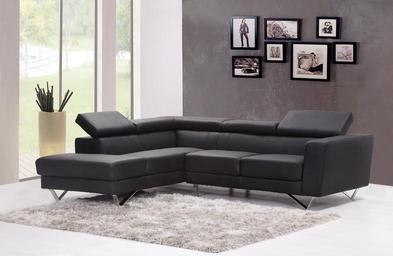Introduction
Hanging large canvases can feel like an art form in itself. The process requires not only creativity but also a keen understanding of space, balance, and aesthetics. How do you turn a simple wall into http://themusespace712.timeforchangecounselling.com/using-wall-art-to-tell-personal-stories-in-your-space a stunning gallery? Whether you’re an art photographer showcasing your latest fine art photography or simply looking to elevate your living space, knowing how to hang a large canvas is essential. This comprehensive guide will provide insights, tips, and techniques that will help you display your artwork like a pro.

The Art of Hanging: How to Display Large Canvases Like a Pro
When it comes to displaying large canvases, there’s more than meets the eye. The way you hang your artwork can significantly affect the overall ambiance of the room. A well-displayed piece can serve as a focal point that draws attention, while poorly hung art can make even the most beautiful pieces seem overlooked.
Understanding Your Space
Evaluating Wall Size and Height
Before even thinking about how to hang a large canvas, evaluate the wall space where it will be displayed. Measure the dimensions of the wall and consider its height. A common rule of thumb is to hang artwork at eye level—about 57-60 inches from the floor—but this can vary depending on your audience.
Considering Room Functionality
Consider how the room's functionality impacts your choice of art. In high-traffic areas like hallways or living rooms, larger canvases can create an inviting atmosphere, whereas smaller pieces may work better in intimate spaces like bedrooms or reading nooks.
Choosing the Right Canvas
Types of Canvases
Large canvases come in various styles and materials—each lends a different vibe to your space. From abstract pieces with bold colors to serene portrait photos that evoke emotion, selecting the right type is crucial for achieving aesthetic harmony.
Selecting Artwork That Complements Your Decor
Your large canvas should complement existing decor elements like furniture, color schemes, and lighting. For example, if you're working with an aesthetic photo wall filled with colorful pictures, choose canvases that share similar tones for visual cohesion.
Tools You’ll Need for Hanging
Gathering Essential Tools and Materials
To hang your canvas properly, you'll need:
- Tape measure Level Pencil Hammer Wall anchors (if needed) Picture hanging hooks or wire
Having these tools on hand simplifies the process and ensures accuracy.


Preparing Your Canvas for Hanging
Checking Frame Integrity
If your canvas has a frame, check its integrity before hanging. Ensure there are no loose parts or damages that could compromise its display.
Deciding on Hanger Type
Different hanging methods offer varying levels of security and aesthetics. D-rings provide sturdy support while picture wire allows for easy adjustment.
How to Hang a Large Canvas: Step-by-Step Guide
Measure Twice: Use your tape measure to find where you'd like to position the canvas. Mark It: Lightly pencil in where you'll place your hooks. Install Hooks: Depending on weight, install appropriate hooks or anchors into the wall. Hang Your Canvas: Carefully place the canvas onto the hooks. Level Check: Use your level tool to ensure it hangs straight. Adjust as Needed: Make minor adjustments until it looks just right.Creating Visual Balance with Large Canvases
Using Symmetry vs Asymmetry in Arrangement
An aesthetically pleasing arrangement often involves some form of balance—be it symmetrical or asymmetrical. Experiment with different placements before settling on one that feels harmonious within your space.
Complementing Your Artwork with Lighting
Importance of Proper Lighting Settings
Lighting plays an integral role in how we perceive art photography and fine art photography alike. Track lights or adjustable lamps can highlight specific features while soft ambient lighting sets an inviting mood.
Enhancing Aesthetic Appeal Through Color Coordination
Choosing Complementary Colors for Surrounding Decor
Art thrives on color dynamics; thus, coordinating surrounding elements helps unify space aesthetics. Pick hues found within your canvas to accentuate other decor items—think cushions or curtains!
Creating an Aesthetic Photo Wall Around Your Canvas
Incorporating Smaller Pieces for Impactful Displays
A single large canvas can shine even brighter when surrounded by smaller pieces that echo its themes or colors—creating what many call an 'aesthetic photo wall.'
Tips from Professional Art Photographers on Displaying Canvases
Many art photographers have their own tricks up their sleeves when it comes to presenting artwork effectively:
Always consider natural light sources. Don’t shy away from mixing mediums—pair paintings with photographs for added depth. Keep experimenting until you find what feels right!FAQs About Hanging Large Canvases
Q1: What height should I hang my large canvas?
A1: Ideally between 57-60 inches from the floor; however, this can vary based on room size and personal preference.
Q2: Do I need special tools for hanging heavy canvases?
A2: Yes! Wall anchors or heavy-duty hooks are recommended for secure mounting.
Q3: How do I ensure my canvas stays straight?
A3: Using a level tool during installation helps maintain straight alignment.
Q4: Can I mix different styles of artwork?
A4: Absolutely! Mixing styles adds character; just ensure they share cohesive elements like color palettes or themes.
Q5: Is lighting really that important?
A5: Yes! Proper lighting enhances visual appeal and brings out details in both fine art photography and regular portraits!
Q6: What's the best way to create an aesthetic photo wall?
A6: Start by selecting one focal piece (like a large canvas) then add smaller frames around it while ensuring balance through spacing and color choices.
Conclusion
Mastering "The Art of Hanging: How to Display Large Canvases Like a Pro" is all about understanding design principles interwoven with personal style preferences. From evaluating spaces creatively to choosing complementary colors and lighting arrangements—each decision contributes significantly towards creating visually striking displays that resonate well with viewers.
Whether you're passionate about showcasing portrait photos or simply want aesthetically pleasing images throughout your home environment—it all boils down to effective presentation techniques paired with genuine artistic appreciation! So go ahead—elevate those walls into splendid showcases for everyone who walks through!
By following these guidelines effectively—and perhaps adding some unique flair—you'll not only enjoy showcasing your favorite pieces but also inspire others through thoughtfully arranged art displays!